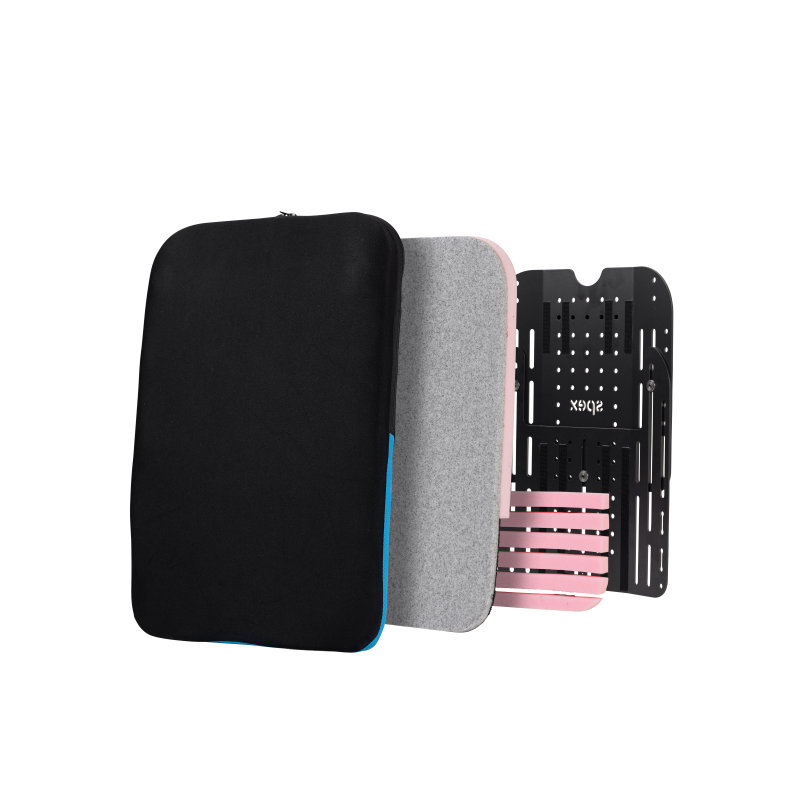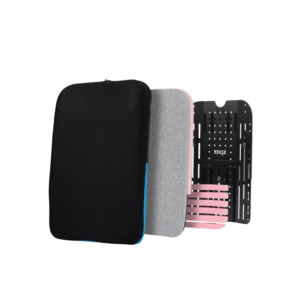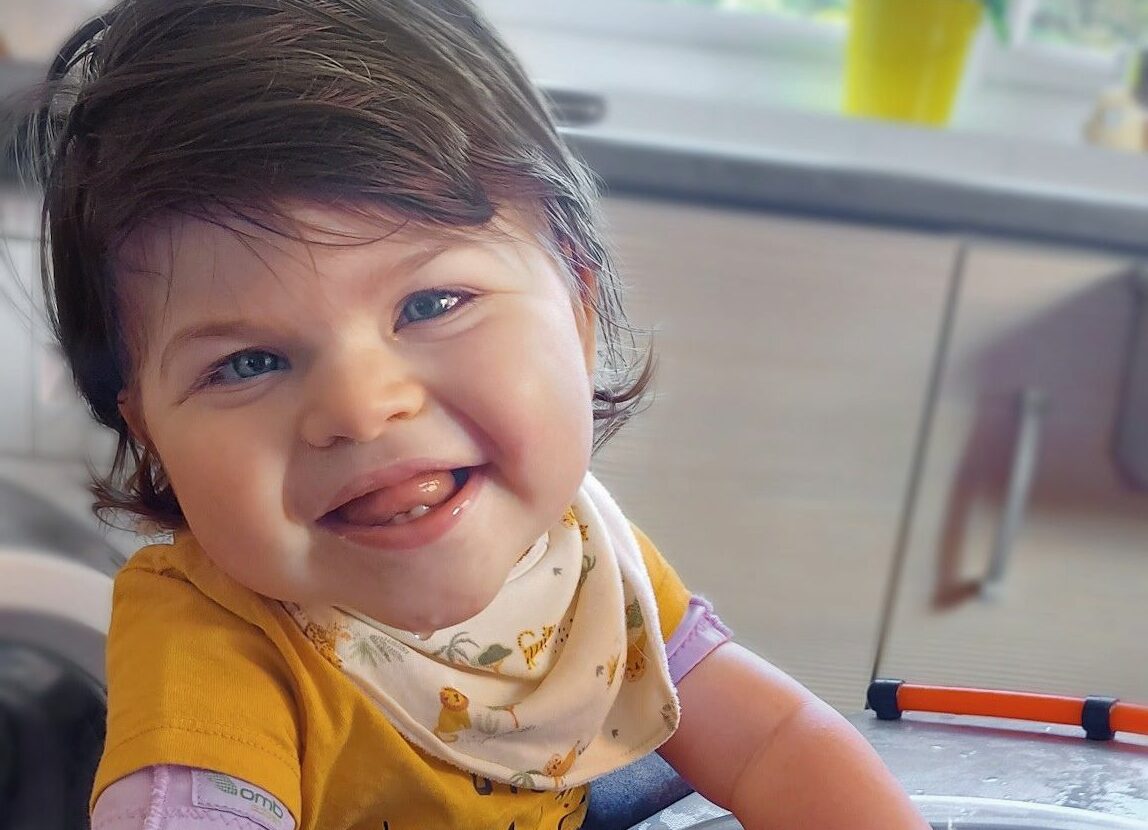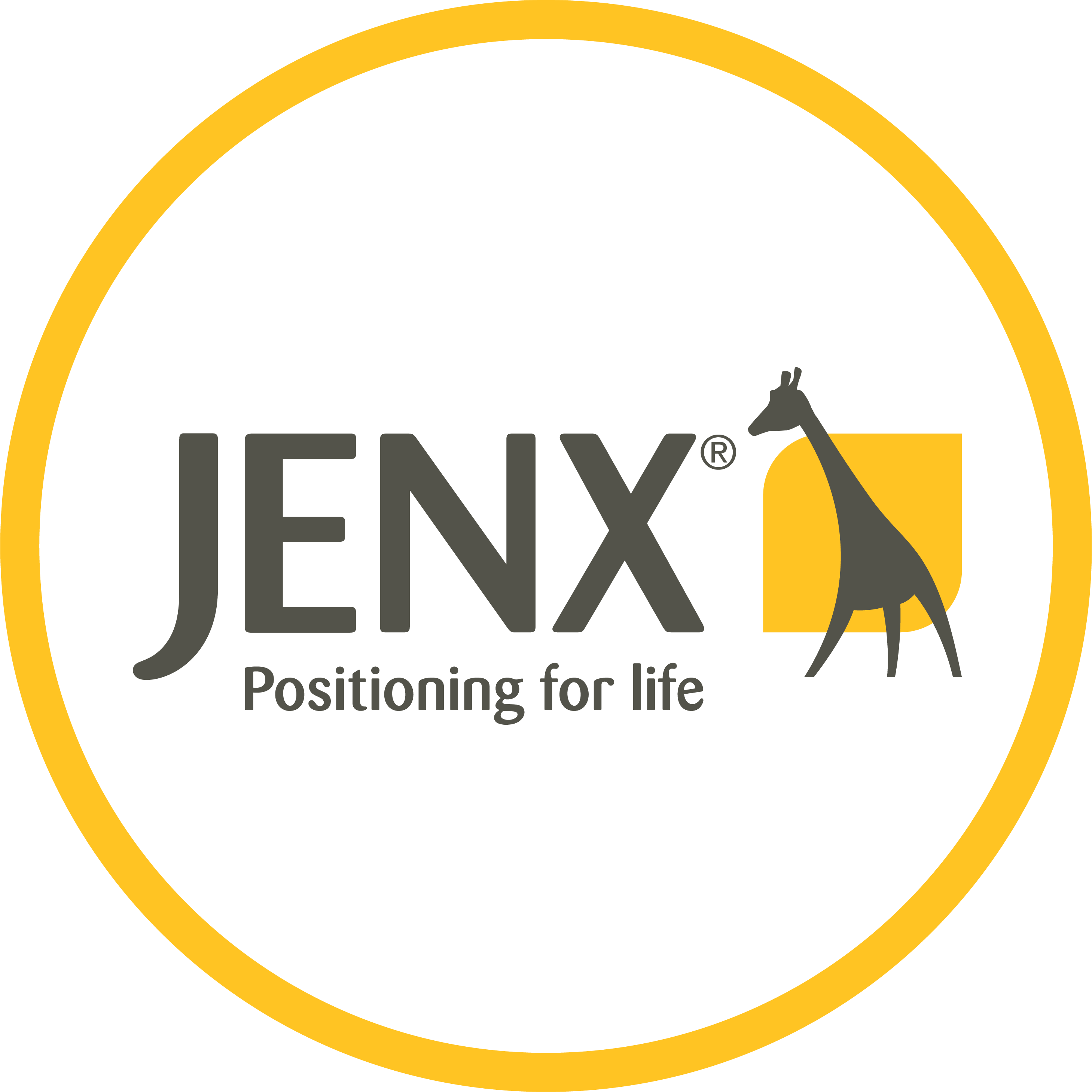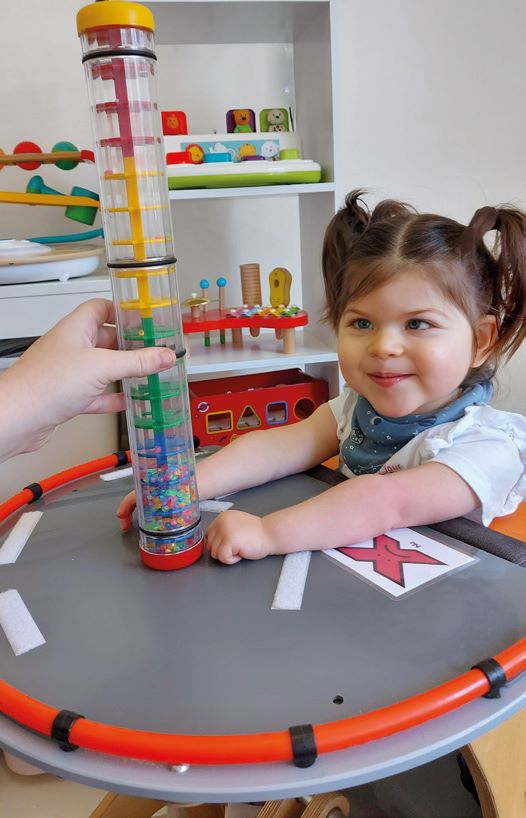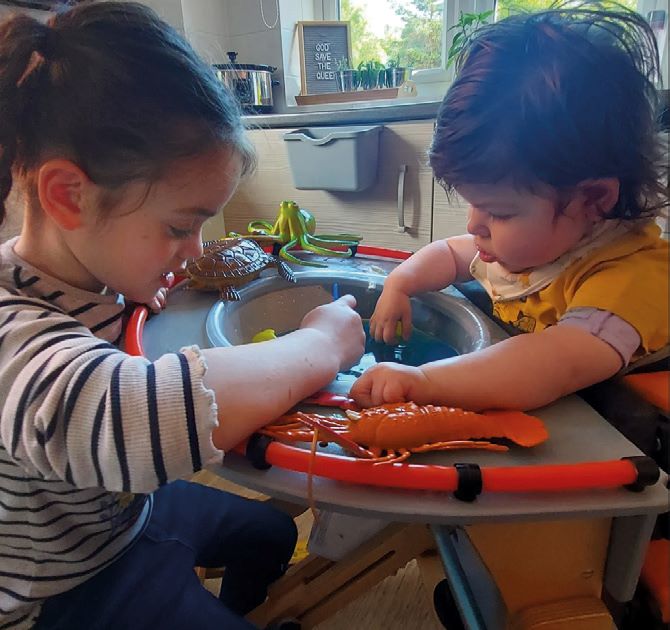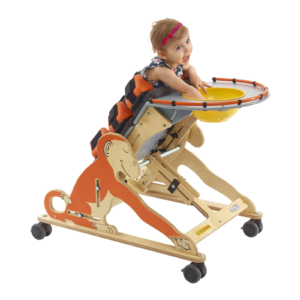Ivy is a 2-year-old who lives in Hampshire, United Kingdom, with her parents and her older sister Riley. She has a diagnosis of Cerebral Palsy and is affected by fatigue, low muscle tone and weakness in all her limbs. Ivy’s mum Leah discusses a small example of the challenges they have faced as a family so far:
As Ivy is unable to sit or stand unaided it meant we were limited to what activities we could do together as a family. Ivy would get tired and frustrated quickly and was nearly completely unable to play independently or eat comfortably, which had a negative effect on all us seeing her so unhappy and held back.
But disability doesn’t define Ivy. She is a determined and happy little girl who shows the world more and more what she CAN do each and every day. She loves nursery rhymes and reading books. She loves to play and have fun – playing with her toys, messy play with her sister, laughing with her friends. With the loving support of her family and the professionals around her, and a little bit of facilitation from assistive technology, Ivy is now showing everyone that she CAN stand and sit safely to play and take part in family activities. Meet Ivy’s new little helper, the Jenx Monkey standing frame!
Ivy is at an age when her neurodevelopment should be at it’s most prolific, and it is shaped by experience and exploration of the world around her. A recent international clinical practice guideline concerning children with Cerebral Palsy between the ages of 0-2 has stressed the importance of early intervention approaches to maximise development, recommending clinicians work with the family to provide support to enable the child to self-discover their environment and provide solutions to overcome movement challenges. Advice is given to consider including in the child’s daily routine a selection of challenging but achievable motor tasks that require persistence and repeated practice for success, skill acquisition and refinement, as well as daily access to a standing frame to help maintain hip stability for children who are non-weightbearing at typical developmental age.
Infants and children have remarkable brain plasticity and aptitude for learning; taking advantage of this window of opportunity with evidence-based intervention for those with early brain injury maximizes functional outcomes and minimises complications.
Ivy’s family and therapy teams are supporting her exactly as per these recommendations, with the Monkey providing helping hands to maximize her development. Using the Monkey, Ivy can now sit and stand safely, reducing her energy expenditure when holding her body up against gravity and in turn reducing her fatigue. The ability to safely and regularly change from sitting to standing enables regular changes in posture and weightbearing, and can break up periods of sedentary behaviour. The supports incorporated into to the piece of equipment can help provide stability for her to focus on developing her head and upper limb control, and it is easily adjustable to allow for challenging of postural control further or to accommodate growth. Ivy can now interact with her family and friends more often and more independently, and she is able to more repeatedly practice the ‘challenging motor tasks’ as part of being a developing 2 year old.
Ivy’s Mum has noticed considerable changes to her physical development, mood and the family routine with the addition of assistive technology into the home environment:
Ivy’s core has gained strength and she is showing no curvature in her spine when sitting. Her mood has also vastly improved. She is so much happier independently playing and whilst eating, with much more enjoyment during the varied activities she can now join in. Her hand usage has increased massively as she doesn’t have to focus on holding herself up.
She is able to use her hands more freely and engage in activities physically.As a family, getting to enjoy mealtime, and playtime together is life changing. Our day-to-day family life has changed so
dramatically by way of enjoyment and togetherness.
Fitness (Body Structure & Function)
The Monkey will help Ivy to regularly change her posture and position, breaking up sedentary behaviours that are associated with poorer health outcomes and enabling physical activity. The support provided reduces Ivy energy expenditure and
reduces her fatigue. Standing and weightbearing with the Monkey is associated with a raft of positive health outcomes that will be beneficial to Ivy, including maintenance of hip stability, improvement of bone density, aiding cardiovascular and respiratory function.
Functioning (Activity)
The support of the Monkey allow Ivy to conserve energy and focus on developing her head, trunk and upper limb control. They enable repeated practice and play for refinement of skills. Ivy’s family have already started to notice improvements in her core strength and hand usage.
Friends (Participation)
The Monkey help Ivy experience some of the same movement and positions as her typically developing peers, in turn enabling participation in play with friends. The Monkey can enable eye to eye interaction in standing with her friends.
Family (Environmental Factors)
The Monkey fit perfectly into the home environment thanks to their smaller footprints. Supported standing with the Monkey has enabled Ivy to interact and play with her sister Riley in more activities.
Fun (Personal Factors)
The trays of Monkey can hold some of Ivy’s favourite toys at playtime. The bowl on the Monkey is perfect for messy play and mixing for baking! Ivy’s parents believe the Monkey have been pivotal in enabling Ivy join in more with fun family activities.
Future
The Monkey will continue to be an important aspect of Ivy’s 24-hour postural care and movement programme in her early years. They will grow with her and continue to aid participation in activities, play and social interaction, whilst helping to maximise development of skills and functional ability. They can also help support her integration into pre-school and school settings when the time comes.
